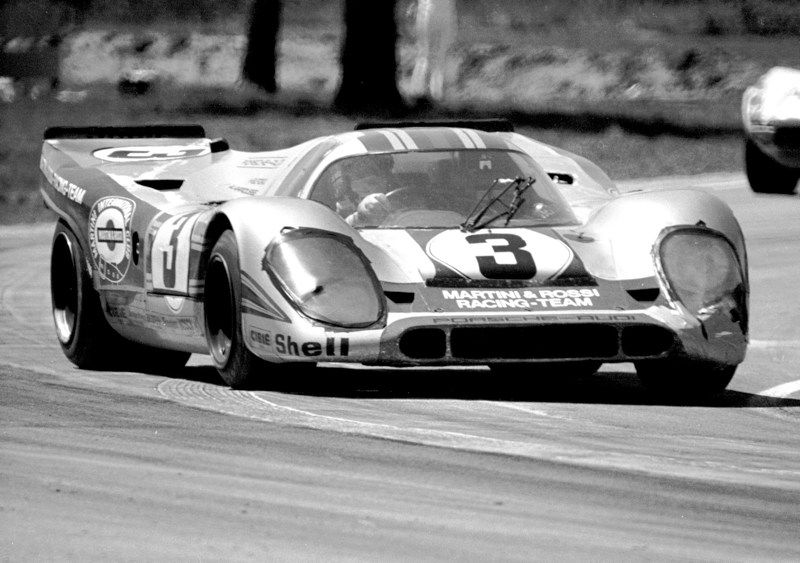Porsche Factory comments on Drilled Disks
Posted: Sat Jul 20, 2013 11:58 am

Above: Porsche won 1st overall at the 1971 12 Hours of Sebring.
Porsche Factory Comments on Drilled Disks
During the [1971] Thursday practice session at Sebring, Porsche Panorama Tech Editor Roger Chaney had an opportunity to talk with a Porsche Factory Racing
Department Engineer. Highlights of the conversation with the engineer appear below.
Chaney: Many Porsche owners are interested in the 917 regardless of whether or not they are engaged in racing. What’s been done to the 917 over last year to improve it?
Porsche Rep: It is always important in racing to improve your car because if you stop making the car better, you won't win anymore. All last season we made improvements.
We made changes to the brakes to improve braking effort. Recently we attempted to make the unsprung mass of the car lighter by drilling the brake discs through the sides.
This is very important at courses like Sebring, which has a lot of bad lumps in the track. By the way, we found that by drilling the discs, the friction between the discs and brake
lining (pads) was better.
Chaney: Was this because of pressure relief between the pads and discs on brake application?
Porsche Rep: We presume so, yes. We also found that the lining wear was not increased by the holes, so we had only success and no evident disadvantages with this lightning.
Chaney: Is there anything on the cars here that is completely new?
Porsche Rep: The alloy is improved in the discs because we found that it is difficult with the drilled discs to prevent cracks without the new material. The brake discs will heat
up to 600 or 700C (close to 1100 to 1300F) during a race, which is dangerous for disc material in terms of cracking unless careful study is made. These studies led to the
new alloy discs with special heat treatment.
Cheney: A 911 owner shouldn't go out and drill his discs then, expecting to get better braking.
Porsche Rep: I don't think he would notice any improvement, no. Maximum temperatures you probably generate on a street 911 would be on the order of about 300C (about 600F
of less).
Note: It was found in practice runs at Sebring that the drilled front discs began to crack. The race was therefore run with undrilled front discs. The rear drilled discs performed
troublefree during the race.